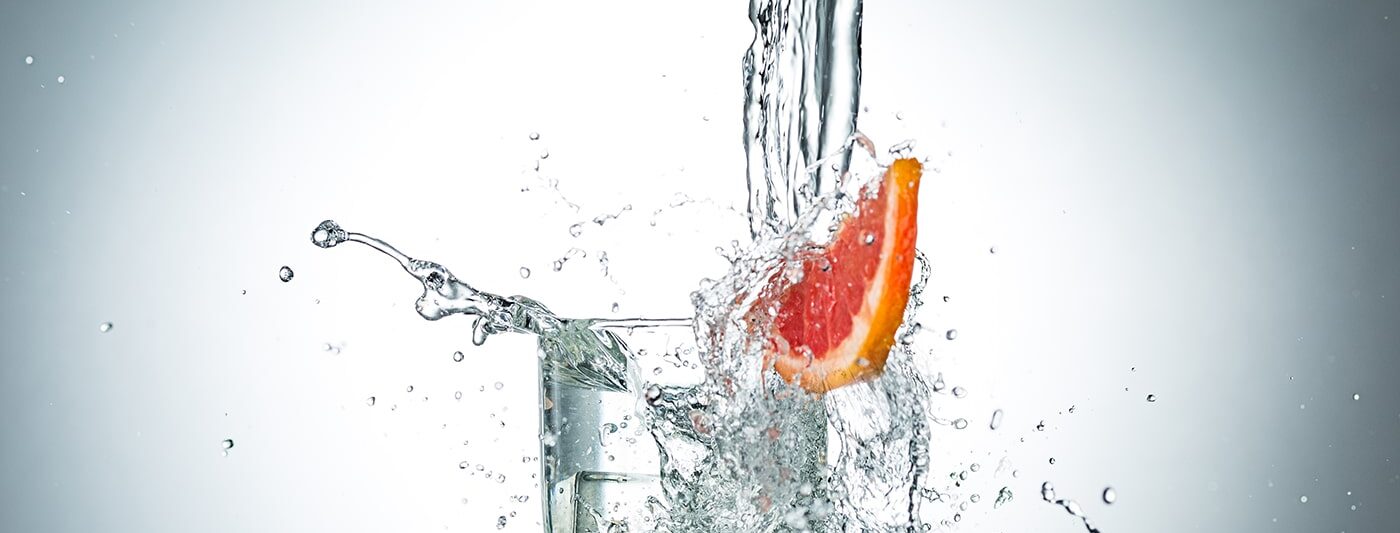Phew, summer is hot! Proper hydration is ALWAYS important, but even more so when the weather heats up or when we’re doing aerobic exercise. Read on for our guide for how to avoid dehydration and keep your cells and blood flow pumping.
Effects of dehydration:
Dehydration has the following effects on the body:
- Reduced blood volume and circulation
- Increased blood viscosity
- Reduced venous blood return to the heart
- Impaired ability to lose heat
- Reduced heat tolerance
- Earlier onset of fatigue due to activity
Since blood flow affects all cells and organs in the body, dehydration can have wide-ranging impacts
Signs of dehydration:
During the early stages of dehydration, symptoms are rarely present. However, organ function may still be compromised. If you experience any of the following symptoms that can relate to dehydration, you are already moderately dehydrated:
- Increased thirst
- Dry mouth
- Fatigue, sleepiness
- Decreased urine output
- Headache
- Dry skin
- Dizziness
Dehydration that progresses and isn’t corrected can be serious, even life threatening. Seek medical attention if you have dehydration associated with rapid heart rate, a drop in blood pressure, confusion, coma, or seizure.
Here are our top tips for staying hydrated
Drink enough water
As a general rule, drink half of your body weight (in pounds), in ounces. For example, if you weigh 200 pounds, you should drink 100 ounces of water per day. Drink more if you perspire due to heat or exercise. Urine should be a light a yellow/straw color. If your urine is darker, you may be under-hydrated. If your urine is clear, you may be taking in too much fluid, or under-absorbing the water you drink.
Remember, caffeinated beverages don’t count in your daily fluid intake, since caffeine can be dehydrating. If you’re going to choose an additional caffeinated drink, we recommend green tea, which has less caffeine and lots of other benefits.
Don’t feel thirsty enough to drink more? Try this tip to stimulate the thirst response: Take a shot glass (or small bathroom cup), fill it with the water, and “shoot” 3 shot glasses of water in a row when you wake up. Set an alarm to do this again at mid-day, and again around 5pm. Try to shoot the water instead of sipping. This helps awaken your thirst mechanism.
Add in electrolytes
This is especially important if you’re losing a lot of water, for instance in hot weather, during exercise, or if you have diarrhea. This is our favorite recipe, adapted from the World Health Organization.
- 1 liter of filtered water (see our preferred filter options below)
- 1/4 tsp iodized sodium chloride (table salt)
- 3/4 tsp sodium bicarbonate (baking soda)
- 1/4tsp potassium chloride (Morton’s Lite salt)
Combine all ingredients and stir until dissolved. Drink 1 liter daily, maximum, unless otherwise directed.
If you desire flavor, squeeze in lemon, lime or orange. Or puree a few berries or mint (with seltzer for part of the 1 liter amount, as desired.) If you prefer sweetness, a small amount of honey, maple syrup or stevia are options.
Mix it up!
Many of us love the fresh taste of pure water. But if you feel you need help with making water more palatable, here are our favorite ideas:
- Add quick flavor: A squeeze of fresh lime or lemon (helps with digestion & bloating) adds a burst of flavor.
- Make water infusions: Add fresh fruit, vegetables, or herbs to your water bottle or pitcher. Let it sit for a few hours, throughout the day, or overnight in the refrigerator, to allow flavors to infuse into the water. The trick with infusions is time. Adding ginger to water for a few minutes is “meh.” Letting it sit for a few hours or overnight, is “delicious!” Here are some ideas:
- 1-2 inch chunk of ginger (washed, no need to peel)
- 3-5 cucumber slices (peel skin if bitter/waxy)
- Handful of berries
- 2-3 lemon or lime wedges
- About 5 mint leaves
- A combo of the above!
- Consider herbal teas: Three brands we like are Tulsi, Organic India and Traditional Medicinals. Avoid brands with additives, including both artificial and natural flavor. Use with your filtered water. In warmer months, adding ice is a refreshing option!
Drink the safest water
Since we consume a significant amount of water each day, our water quality really matters. Harmful contaminants such as pesticides, heavy metals and plastic chemicals can still make their way into drinking water. If you’re concerned about your drinking water quality, water tests such as these can be very helpful.
In addition, we also recommend that you:
- Filter your water: Choose a high-quality, carbon-block water filter for your home. Carbon-block filters remove the most contaminants but allow important minerals to remain (unlike reverse-osmosis filters, which are mineral depleting). Two brands that consistently rate highly on consumer reports are Aquasana and MultiPure.
- Choose safe water containers: Invest in a glass water bottle like the Hydrofuse Fruit Infusion Glass Sports Water Bottle. Avoid plastic water bottles and containers.
When to say more
If you are drinking amounts of water according to the general rule above, and you experience dark or clear urine, frothy urine, visible blood in urine, frequent urination, or interrupted sleep due to the need to urinate, let your healthcare provider know.
Parts of this article were written with the help of nutrition residents Jill Sheppard Davenport and Karen Herb.


 What Are Antihistamines Doing to Our Brains?
What Are Antihistamines Doing to Our Brains?